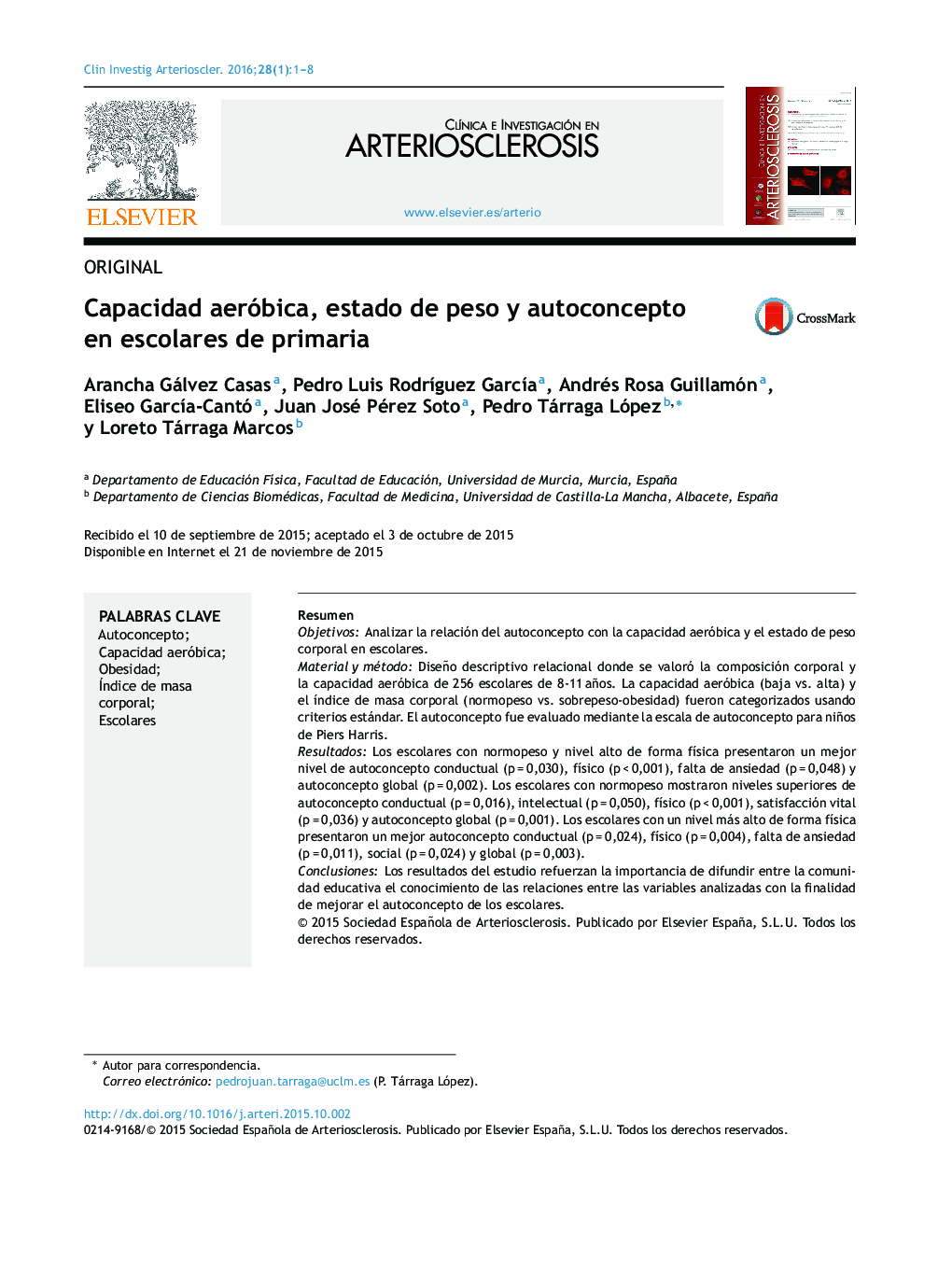| کد مقاله | کد نشریه | سال انتشار | مقاله انگلیسی | نسخه تمام متن |
|---|---|---|---|---|
| 2839522 | 1165192 | 2016 | 8 صفحه PDF | دانلود رایگان |
ResumenObjetivosAnalizar la relación del autoconcepto con la capacidad aeróbica y el estado de peso corporal en escolares.Material y métodoDiseño descriptivo relacional donde se valoró la composición corporal y la capacidad aeróbica de 256 escolares de 8-11 años. La capacidad aeróbica (baja vs. alta) y el índice de masa corporal (normopeso vs. sobrepeso-obesidad) fueron categorizados usando criterios estándar. El autoconcepto fue evaluado mediante la escala de autoconcepto para niños de Piers Harris.ResultadosLos escolares con normopeso y nivel alto de forma física presentaron un mejor nivel de autoconcepto conductual (p = 0,030), físico (p < 0,001), falta de ansiedad (p = 0,048) y autoconcepto global (p = 0,002). Los escolares con normopeso mostraron niveles superiores de autoconcepto conductual (p = 0,016), intelectual (p = 0,050), físico (p < 0,001), satisfacción vital (p = 0,036) y autoconcepto global (p = 0,001). Los escolares con un nivel más alto de forma física presentaron un mejor autoconcepto conductual (p = 0,024), físico (p = 0,004), falta de ansiedad (p = 0,011), social (p = 0,024) y global (p = 0,003).ConclusionesLos resultados del estudio refuerzan la importancia de difundir entre la comunidad educativa el conocimiento de las relaciones entre las variables analizadas con la finalidad de mejorar el autoconcepto de los escolares.
ObjetivesTo analyze the relationship between self-concept, aerobic capacity and weight status in schoolchildren.Material and methodRelational descriptive design in which was assessed the weight status and aerobic capacity of 256 schoolchildren among 8-11 years. Aerobic capacity (low vs high) and the body mass index (normal-weight vs overweight-obesity) were categorized using standard criteria. The self-concept was assessed through the Piers Harris self-concept scale for children.ResultsSchoolchildren with normal-weight and high fitness level showed better levels of conductual self-concept (P = .030), physical (P < .001), lack of anxiety (P = .048), and global self-concept (P = .002). The schoolchildren with normal-weight show higher levels of conductual self-concpt (P = .016), intellectual (P = .050), physical (P < .001), life satisfaction (P = .036), and global self-concept (P = .001). The schoolchildren with a higher fitness level showed better conductual self-concept (P = .024), physical (P = .004), lack of anxiety (P = .011), social (P = .024), and global (P = .003).ConclusionsThe results of the study strengthen the importance to transmit to the educative community the knowledge of the relationship between the variables analyzed aiming to improve the schoolchildren self-concept.
Journal: Clínica e Investigación en Arteriosclerosis - Volume 28, Issue 1, January–February 2016, Pages 1–8
